Sciatica is caused by a ruptured disk, spinal stenosis, and injury. Those who suffer from sciatic pain describe their experience as so debilitating that they could not get out of bed or off the couch once it occurs.
Sciatic pain is triggered when the vertebrae in the spine are compressed. Most sufferers report pain in the lower back and hips. Doctors discourage over-the-counter painkillers and recommend stretching exercises that provide muscle and nerve relief.
Here are six exercises recommended by physiotherapists that can help one cope with sciatic pain. Remember, never do these exercises to the point that you feel pain, as it may only aggravate the problem.
1. Reclining Pigeon Pose.
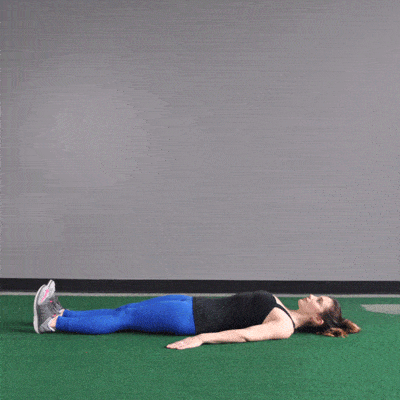
This basic yoga pose opens the hips and there are varying ways to do it, depending on one’s flexibility. For those with sciatica, the beginner’s pose is the reclining pigeon pose, to start the treatment.
1. Bring your right leg up to an angle while laying on your back. Bring both hands behind your thigh and lock your fingers tightly together.
2. Slowly lift your leg and place your right ankle on top of your left knee.
3. Relax and hold the position for a moment. This position stretches the minute piriformis muscle, which sometimes causes pain when it inflamed from being pressed against the sciatic nerve.
4. Repeat the same steps for the other leg.
If you are comfortable doing the reclining version of the pose without the pain, you can advance to the sitting and forward versions with your physical therapist’s advice and guidance.
2. Sitting Pigeon Pose.
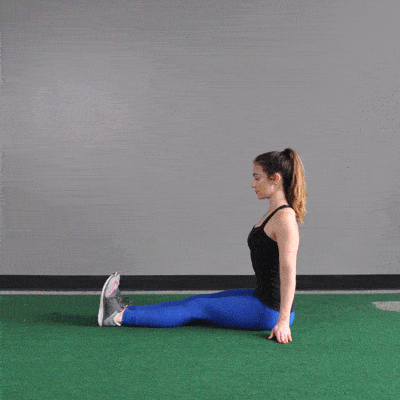
1. Sit on the floor and stretch your legs out straight in front of you.
2. Bend your right leg and put your right ankle on top of your left knee.
3. Slowly lean forward and with your upper body, reach towards the foot on your straightened leg.
4. Hold the pose for 15 to 30 seconds and feel the stretch on your glutes and lower back.
5. Release and repeat the same steps on the other side.
3. Forward Pigeon Pose.
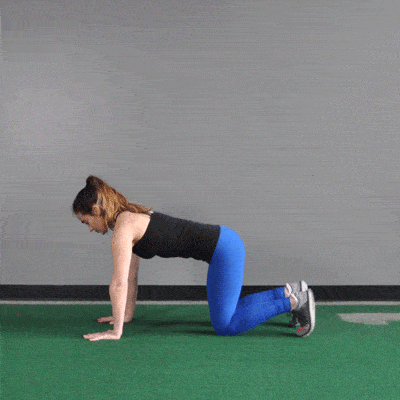
1. Get down on all fours on a kneeling position.
2. Pick your right leg up and move it forward on the ground. Your lower leg should be on the ground when doing this step, horizontal to your body. Your right foot should also be in front of your right knee as your right knee stays to your right.
3. Stretch your left leg all the way out behind you while keeping your foot touched on the floor, with your toes pointing back.
4. Gradually shift your body weight from your arms to your legs. Your legs should be supporting your weight at this point. Slowly sit up straight, with your hands on both sides of your body.
5. Take a deep breath when you’ve reached this position. As you exhale, lean your upper body forward over your front leg. Let your arms support your weight as much as possible.
6. Repeat on your left leg.
4. Knee to Opposite Shoulder.
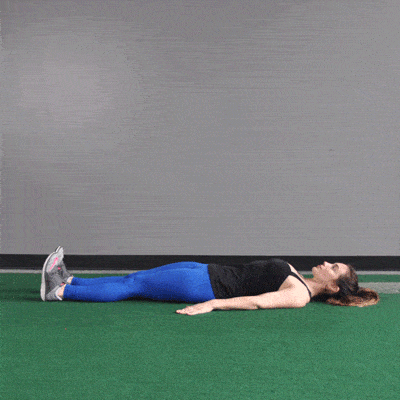
This exercise relieves sciatic pain by engaging and loosening the gluteal and piriformis muscles, these also become inflamed and could press against the sciatic nerve.
1. Lie on your back and extend your legs forward with your feet flexed upward.
2. Bend your right leg first and clasp your hand around your knee.
3. Slowly and gently pull your right leg across your body, towards your left shoulder. Hold the position for 30 seconds and remember not to pull your knee to the point that it causes moderate discomfort. The feel of relieving stretch must be felt, not pain of any kind.
4. Release your knee and let it return to its starting position.
5. Do a total of 3 reps before switching and repeating the steps on your left knee.
5. Sitting Spinal Stretch.
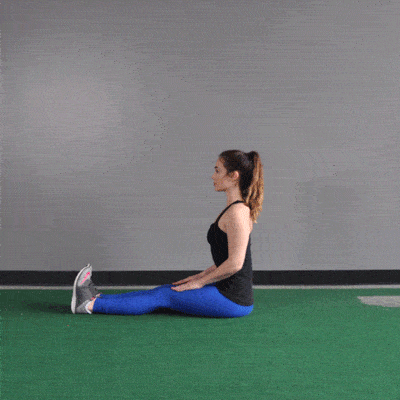
1. Sit on the floor, extend your legs straight and flex your feet upward.
2. Bend your right knee and cross your leg over to the left side of your body. Let your foot stay flat on the floor.
3. Gently turn your body towards your right by placing your left elbow on the right side of your right knee.
4. Do above steps three times, holding the position for 30 seconds each time. Switch sides right after.
6. Standing Hamstring Stretch.
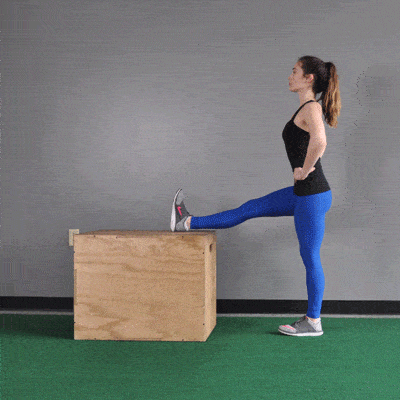
This stretch is great for easing the pain and tightness in the hamstring that comes with sciatica pain.
1. Take a sturdy object like a chair or a table (or step on a staircase) that falls at or slightly below your hip level. Place your right foot on the elevated area. To make sure that your toes and leg are straight, flex your foot.
2. Reach for your elevated foot by slowly bending towards it. The further you reach, the deeper the stretch. Do not force yourself to reach any further once you feel any type of pain.
3. Do not lift up your hip on your elevated side and instead just ease it down. If it is a challenge doing so at first, let your left foot step on a yoga band that loops over your right thigh to hold it down.
4. Hold the pose for at least 30 seconds before repeating the steps on the other side.

